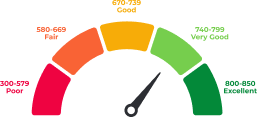mcpersonalfinanceinternal->Moneycontrol/MC_PersonalFinance/MC_PersonalFinance_Internal_728x90|~|Moneycontrol/MC_PersonalFinance/MC_PersonalFinance_Internal_160x600_Networth|~|Moneycontrol/MC_PersonalFinance/MC_PersonalFinance_Internal_300x250_ATF|~|Moneycontrol/MC_PersonalFinance/MC_PersonalFinance_ITR_300x600|~|Moneycontrol/MC_PersonalFinance/MC_PersonalFinance_ITR_728x90|~|Moneycontrol/MC_PersonalFinance/MC_PersonalFinance_Loans_ATF_728|~|Moneycontrol/MC_PersonalFinance/MC_PersonalFinance_Loans_ATF_300|~|Moneycontrol/MC_PersonalFinance/MC_PersonalFinance_Loans_ATF_990|~|Moneycontrol/MC_PersonalFinance/MC_PersonalFinance_Loans_MTF_728|~|Moneycontrol/MC_PersonalFinance/MC_PersonalFinance_Loans_BTF_728|~|Moneycontrol/MC_PersonalFinance/MC_PersonalFinance_Loans_HL_ATF_728|~|Moneycontrol/MC_PersonalFinance/MC_PersonalFinance_Loans_HL_ATF_300|~|Moneycontrol/MC_PersonalFinance/MC_PersonalFinance_Loans_HL_ATF_990|~|Moneycontrol/MC_PersonalFinance/MC_PersonalFinance_Loans_HL_MTF_728|~|Moneycontrol/MC_PersonalFinance/MC_PersonalFinance_Loans_HL_BTF_728|~|Moneycontrol/MC_PersonalFinance/MC_PersonalFinance_Loans_HL_CALC_ATF_728|~|Moneycontrol/MC_PersonalFinance/MC_PersonalFinance_Loans_HL_CALC_ATF_300|~|Moneycontrol/MC_PersonalFinance/MC_PersonalFinance_Loans_HL_CALC_ATF_990|~|Moneycontrol/MC_PersonalFinance/MC_PersonalFinance_Loans_HL_NWS_ATF_728|~|Moneycontrol/MC_PersonalFinance/MC_PersonalFinance_Loans_HL_NWS_ATF_300|~|Moneycontrol/MC_PersonalFinance/MC_PersonalFinance_Loans_HL_NWS_ATF_990|~|Moneycontrol/MC_PersonalFinance/MC_PersonalFinance_Loans_HL_PRDC_ATF_728|~|Moneycontrol/MC_PersonalFinance/MC_PersonalFinance_Loans_HL_PRDC_ATF_990|~|Moneycontrol/MC_PersonalFinance/MC_PersonalFinance_Loans_CL_CALC_ATF_728|~|Moneycontrol/MC_PersonalFinance/MC_PersonalFinance_Loans_CL_CALC_ATF_300|~|Moneycontrol/MC_PersonalFinance/MC_PersonalFinance_Loans_CL_CALC_ATF_990|~|Moneycontrol/MC_PersonalFinance/MC_PersonalFinance_Loans_CL_NWS_ATF_728|~|Moneycontrol/MC_PersonalFinance/MC_PersonalFinance_Loans_CL_NWS_ATF_300|~|Moneycontrol/MC_PersonalFinance/MC_PersonalFinance_Loans_CL_NWS_ATF_990|~|Moneycontrol/MC_PersonalFinance/MC_PersonalFinance_Loans_CL_PRDC_ATF_728|~|Moneycontrol/MC_PersonalFinance/MC_PersonalFinance_Loans_CL_PRDC_ATF_300|~|Moneycontrol/MC_PersonalFinance/MC_PersonalFinance_Loans_CL_PRDC_ATF_990|~|Moneycontrol/MC_PersonalFinance/MC_PersonalFinance_Loans_CL_CMPR_ATF_728|~|Moneycontrol/MC_PersonalFinance/MC_PersonalFinance_Loans_CL_CMPR_ATF_300|~|Moneycontrol/MC_PersonalFinance/MC_PersonalFinance_Loans_CL_CMPR_ATF_990|~|Moneycontrol/MC_PersonalFinance/MC_PersonalFinance_Loans_PL_CALC_ATF_728|~|Moneycontrol/MC_PersonalFinance/MC_PersonalFinance_Loans_PL_CALC_ATF_300|~|Moneycontrol/MC_PersonalFinance/MC_PersonalFinance_Loans_PL_CALC_ATF_990|~|Moneycontrol/MC_PersonalFinance/MC_PersonalFinance_Loans_PL_NWS_ATF_728|~|Moneycontrol/MC_PersonalFinance/MC_PersonalFinance_Loans_PL_NWS_ATF_300|~|Moneycontrol/MC_PersonalFinance/MC_PersonalFinance_Loans_PL_NWS_ATF_990|~|Moneycontrol/MC_PersonalFinance/MC_PersonalFinance_Loans_PL_PRDC_ATF_728|~|Moneycontrol/MC_PersonalFinance/MC_PersonalFinance_Loans_PL_PRDC_ATF_300|~|Moneycontrol/MC_PersonalFinance/MC_PersonalFinance_Loans_PL_PRDC_ATF_990|~|Moneycontrol/MC_PersonalFinance/MC_PersonalFinance_Loans_PL_CMPR_ATF_300|~|Moneycontrol/MC_PersonalFinance/MC_PersonalFinance_Loans_PL_CMPR_ATF_728|~|Moneycontrol/MC_PersonalFinance/MC_PersonalFinance_Loans_PL_CMPR_ATF_990|~|Moneycontrol/MC_PersonalFinance/MC_PersonalFinance_Loans_EL_CALC_ATF_728|~|Moneycontrol/MC_PersonalFinance/MC_PersonalFinance_Loans_EL_CALC_ATF_300|~|Moneycontrol/MC_PersonalFinance/MC_PersonalFinance_Loans_EL_CALC_ATF_990|~|Moneycontrol/MC_PersonalFinance/MC_PersonalFinance_Loans_EL_NWS_ATF_728|~|Moneycontrol/MC_PersonalFinance/MC_PersonalFinance_Loans_EL_NWS_ATF_300|~|Moneycontrol/MC_PersonalFinance/MC_PersonalFinance_Loans_EL_NWS_ATF_990|~|Moneycontrol/MC_PersonalFinance/MC_PersonalFinance_Loans_EL_PRDC_ATF_728|~|Moneycontrol/MC_PersonalFinance/MC_PersonalFinance_Loans_EL_PRDC_ATF_300|~|Moneycontrol/MC_PersonalFinance/MC_PersonalFinance_Loans_EL_PRDC_ATF_990|~|Moneycontrol/MC_PersonalFinance/MC_PersonalFinance_Loans_EL_CMPR_ATF_728|~|Moneycontrol/MC_PersonalFinance/MC_PersonalFinance_Loans_EL_CMPR_ATF_300|~|Moneycontrol/MC_PersonalFinance/MC_PersonalFinance_Loans_EL_CMPR_ATF_990|~|Moneycontrol/MC_PersonalFinance/MC_PersonalFinance_Loans_BL_CALC_ATF_728|~|Moneycontrol/MC_PersonalFinance/MC_PersonalFinance_Loans_BL_CALC_ATF_300|~|Moneycontrol/MC_PersonalFinance/MC_PersonalFinance_Loans_BL_CALC_ATF_990|~|Moneycontrol/MC_PersonalFinance/MC_PersonalFinance_Loans_BL_NWS_ATF_728|~|Moneycontrol/MC_PersonalFinance/MC_PersonalFinance_Loans_BL_NWS_ATF_300|~|Moneycontrol/MC_PersonalFinance/MC_PersonalFinance_Loans_BL_NWS_ATF_990|~|Moneycontrol/MC_PersonalFinance/MC_PersonalFinance_Loans_BL_PRDC_ATF_728|~|Moneycontrol/MC_PersonalFinance/MC_PersonalFinance_Loans_BL_PRDC_ATF_300|~|Moneycontrol/MC_PersonalFinance/MC_PersonalFinance_Loans_BL_CMPR_ATF_728|~|Moneycontrol/MC_PersonalFinance/MC_PersonalFinance_Loans_BL_CMPR_ATF_300|~|Moneycontrol/MC_PersonalFinance/MC_PersonalFinance_Loans_BL_CMPR_ATF_990|~|Moneycontrol/MC_PersonalFinance/MC_PersonalFinance_Loans_LAP_CALC_ATF_300|~|Moneycontrol/MC_PersonalFinance/MC_PersonalFinance_Loans_LAP_CALC_ATF_990->
In App




















 Instant disbursal
Instant disbursal Minimal documentation
Minimal documentation 100% digital process
100% digital process Enter your Personal details
Enter your Personal details Complete your KYC
Complete your KYC Set up EMI repayment
Set up EMI repayment
















 100% Digital
100% Digital Quick Disbursal
Quick Disbursal Low Interest Rates
Low Interest Rates


